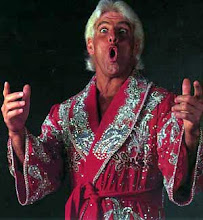Shell Defense Basketball Practice Drill --- a) 4 on 4 around-the-horn, b) 4 on 4 penetrate and dish, c) 4 on 4 with low-post, d) 4 on 4 with two offensive players in the corner. *Ultimate drill for teaching all of our man defensive rules. #Listed above are the situations we use to constantly reinforce to our players our man defense tactics. Each group of four players must play winning defense before we change player groups on the court.
Team Offense Basketball Drills --- a) Motion offense, b) Even font zone offense, c) Odd front zone offense, d) Match up zone offense, e) Flex offense, f) 1-4 High offense, g) Delay game offense, h) Full court zone press offense, i) Full court match up press offense, and j) Half court press offense.
Basketball Offensive Plays Drills --- a) Man offense basketball plays, b) Zone offense plays, c) Baseline inbounds plays, d) Sideline inbounds plays, e) Last second plays.
Team Defense Breakdown --- a) Zone defense slides, b) 1 2 1 1 Press slides, c) 2 2 1 Press slides, d) 1 3 1 Half-court press slides, e) Under out-of-bounds defense, f) Triangle and Two, g) Box-and-1.
http://www.angelfire.com/nc/ezyduzits12steptools/bball_playbook.html
I use the 1-3-1 similar to this sometimes against a team not that great on dribbling or passing.
I let the point guard be the point player or chaser here.I also let the opposing team get 1 pass in and then we attack right away. Be careful and watch for ball reversal.
http://www.breakthroughbasketball.com/defense/2-3zone.html This zone is similar to the 2-3 zone that Jim Boeheim uses at Syracuse. This is can be a very effective zone defense, because it still covers the 3-point arc as well as the inside game.
http://www.guidetocoachingbasketball.com/man_defense.htm#Tight_man-to-man_basketball_defense
This defense calls for one man to guard an opponent without ever leaving your assigned player or switching. Coach Branch McCracken used it against teams who didn’t use a lot of screens and was quite successful. There are coaches who insist they use only tight man-to-man defense; however, they are soon to admit that “teammates help one another out.”
Coach McCutchan didn’t believe that a man-to-man could get results without switching once in awhile. If a defender tries to force his way through all screens, he surely will pick up a lot of fouls.
This defense can be used as a full-court, three-quarter-court, or half-court pressure defense. Such a defense is most effective when sprung as a surprise and used for only short periods of time. Use more passive defenses in-between. You will find this defense to be most effective against inexperienced teams or a team who has poor ball-handlers.
The tight man-to-man is a great defense for a quick, small team. Use it to move the opponent’s point of attack farther out than they normally like. This defense is an excellent defense to use when trailing, late in the game.
Defensive players play closer than normal to their assigned opponent. They must go after him, or her, in an aggressive manner whenever they have the ball. When playing the dribbler force him, or her, to their weak hand, not attempting to steal the ball. Stay in his, or her, bubble faking and jabbing to stop the dribble.
As soon as the dribbler stops, the defender moves up quickly getting as close to the opponent as possible, without fouling, waving arms to block vision, and shouting, "Dead! Dead! Dead!" The teammates, hearing this, get into the passing lane to the person they are guarding to prevent them from receiving an easy pass.
If the dribbler does pass off, his defender must drop off immediately toward the basket in the direction the pass was made.
Of course I feel like I the IDEAL theory/model was the method that I used as an aid to help me with this problem.
I-I identified the problem which was my team was giving up too many offensive rebounds to the other teams.
D-I defined the problem in that I lacked a power forward who could do what was expected of him.
E- I explored interventions by reading up on various types of defenses that I could possibly use to have the other teams to turn the ball over on offense.
A- I acted and implemented these new defenses in practice and we tried them in the games.
L- I looked at the results and I was satisfied with what I got in return. Our efforts turned into causing the offensive team to commit turnovers and thus helped us to win games.
http://www.coachlikeapro.com/basketball-practice-drills.html

No comments:
Post a Comment